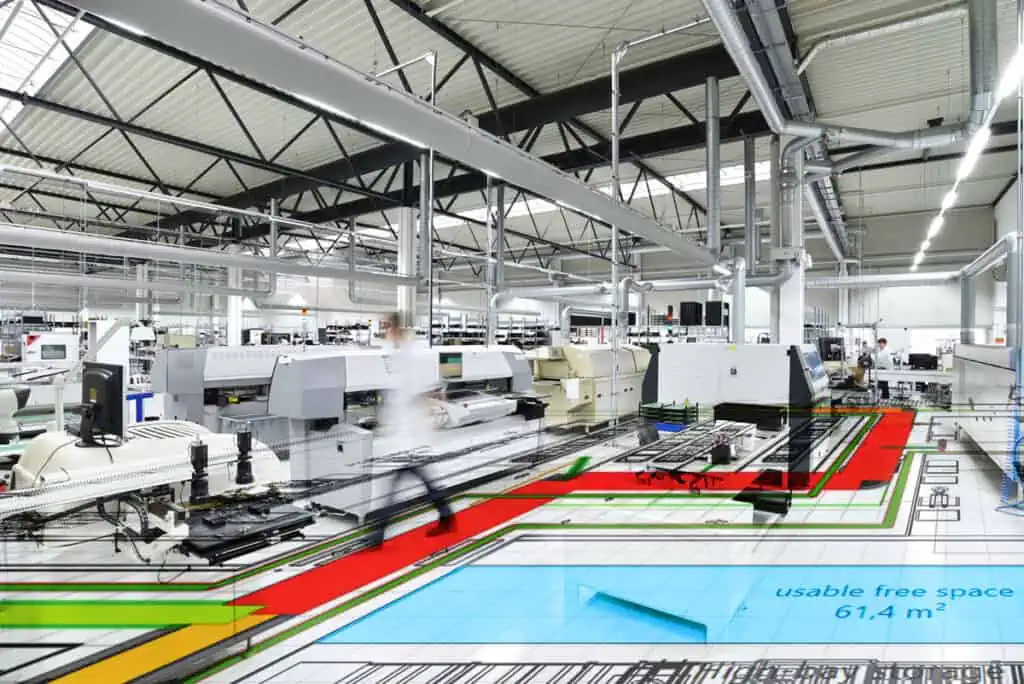Systematic Layout Planning, also known as SLP, is a method used to organize and optimize the layout of a manufacturing facility. The goal of SLP is to improve the efficiency and productivity of the facility by reducing waste, increasing flow, and minimizing the distance that materials and products need to travel. SLP is a structured and systematic approach that can be applied to any type of facility, including factories, warehouses, and distribution centers. In this blog post, we will explore the importance of SLP, the process of SLP, the key tools used in SLP, and the benefits of using SLP.

The importance of Systematic Layout Planning
The layout of a manufacturing facility can have a major impact on its efficiency and productivity. A poorly designed layout can lead to wasted time and resources, bottlenecks, and delays. These issues can lead to increased costs and reduced competitiveness. SLP is a method for addressing these issues by analyzing the current layout and operations, identifying areas for improvement, and designing a new layout that is optimized for flow and efficiency.
The process of Systematic Layout Planning
The process of SLP begins with a thorough analysis of the current layout and operations. This includes the flow of materials and products, the movement of people and equipment, and the location of storage and support areas. Once the current layout and operations have been analyzed, the next step is to identify areas for improvement. This may involve re-arranging equipment, moving storage areas, or redesigning the layout to improve flow and reduce waste. It may also involve identifying bottlenecks or areas of congestion and finding ways to alleviate them.
Key tools used in Systematic Layout Planning
One of the key tools used in SLP is the flow diagram, which is a visual representation of the movement of materials and products through the facility. The flow diagram is used to identify areas of congestion, bottlenecks, and other issues that can be addressed through layout changes. It can also be used to track the progress of the layout design process and to evaluate the effectiveness of changes made to the facility.
About Richard Muther Richard Muther (1913-2014) was an industrial engineer and consultant who is known for his contributions to the field of systematic layout planning (SLP) in the early 20th century. He developed a methodology for analyzing and optimizing the flow of materials and products through a facility, and for reducing waste and improving productivity. His 1955 book "Practical Plant Layout" is considered a classic in the field of industrial engineering and his contributions to SLP are still studied and referenced today. https://richardmuther.com/
Another important aspect of SLP is the use of space and materials storage. An efficient layout will optimize the use of space and storage areas, making it easier to access materials and products and reducing the need for extra space. This can be achieved by locating storage areas close to the areas where they are used, and by using vertical storage solutions where possible.
Benefits of using SLP
The benefits of using SLP include improved efficiency and productivity, reduced waste, and lower costs. A well-designed layout can improve the flow of materials and products, reduce bottlenecks, and minimize the distance that materials and products need to travel. This can lead to faster turnaround times, higher quality products, and increased competitiveness.
In addition to these benefits, SLP also takes into consideration safety and ergonomics. Safety hazards, such as sharp edges, uneven surfaces, and poor lighting, can be identified and addressed through layout changes. Proper ergonomics can also be incorporated into the design, such as adjustable workstations and equipment, to reduce the risk of injury and improve employee comfort.
Finally, SLP also involves the consideration of future expansion and the ability to adapt to changing needs. A good layout will be flexible and adaptable, making it easy to add or move equipment, storage areas, and other elements as needed. This will help the facility to remain efficient and productive over time.
Software & SLP
There are a variety of software tools available for Systematic Layout Planning. These tools can be used to create flow diagrams, simulate layouts and operations, and analyze the efficiency and productivity of a factory. Some of the features that may be included in these software tools include:
- Drag-and-drop interface for designing and editing layouts
- Templates and libraries of common manufacturing equipment and facilities
- Simulation and animation capabilities for visualizing the flow of materials and products
- Analysis tools for evaluating the floorspace footprint of a layout
- Integration with CAD (i.e. DWG/DXF)
- 3D visualization and virtual reality support
In conclusion, Systematic Layout Planning is a structured and systematic approach to layout design that can be applied to any type of facility. By analyzing the current layout and operations, identifying areas for improvement, and optimizing the flow of materials, usage of space and storage and the movement of workers, industrial engineers can continue to optimize facility layouts and keep their operations running at peak efficiency.
If you don’t want to miss any more of our blog articles, simply subscribe to our blog here:
No problem, simply subscribe to our Blog-News!



